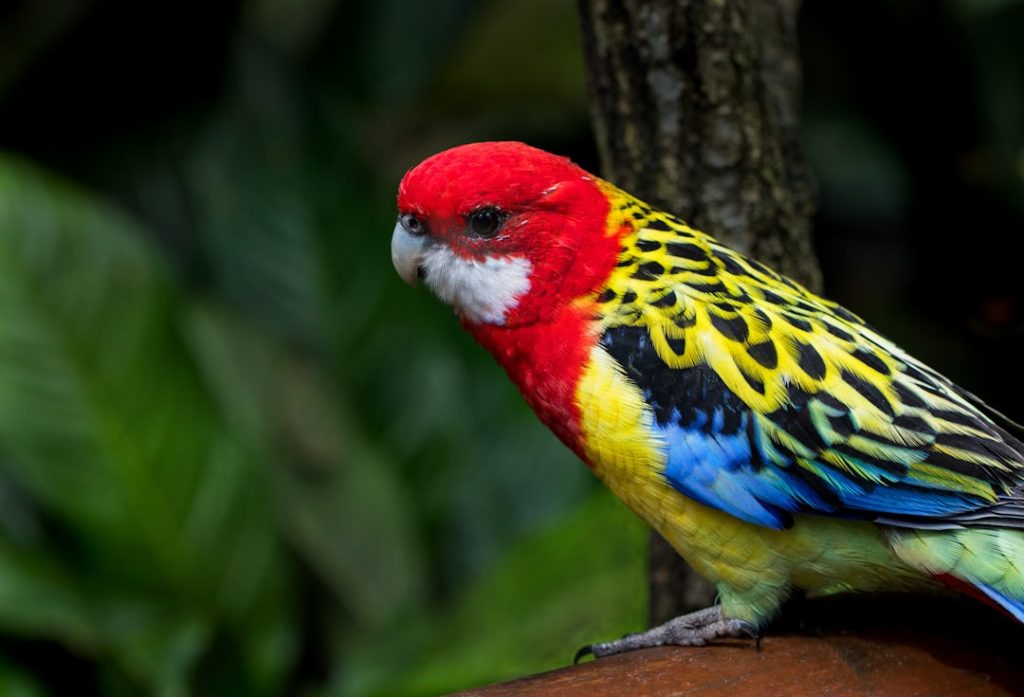Colorful chicken breeds are visually distinctive varieties of domestic fowl characterized by their vibrant plumage. These breeds exhibit a wide range of colors and patterns, making them popular among poultry enthusiasts and hobbyists. Examples include the Araucana, known for its blue and green eggs and unique ear tufts, and the Orpington, which comes in various colors such as buff, black, and blue.
Colorful chicken breeds have diverse origins, with some developed through selective breeding programs and others naturally occurring in specific regions. These breeds often possess unique traits beyond their appearance, such as egg color, temperament, and adaptability to different climates. Raising colorful chicken breeds requires specific care and management practices to maintain their health and preserve their distinctive features.
In agriculture, these breeds serve various purposes, including egg and meat production, as well as ornamental value. The existence of colorful chicken breeds contributes to the genetic diversity of domestic poultry and enhances the aesthetic appeal of backyard flocks and small-scale farms.
Table of Contents
- 1 The History and Origin of Colorful Chicken Breeds
- 2 Popular Breeds of Colorful Chickens
- 3 Unique Characteristics and Traits of Colorful Chicken Breeds
- 4 Caring for and Raising Colorful Chicken Breeds
- 5 The Role of Colorful Chicken Breeds in Agriculture and Farming
- 6 The Beauty and Diversity of Colorful Chicken Breeds
- 7 FAQs
Key Takeaways
- Colorful chicken breeds come in a variety of vibrant and eye-catching colors, making them a popular choice for backyard poultry enthusiasts.
- The history and origin of colorful chicken breeds can be traced back to different parts of the world, each with its own unique story and characteristics.
- Popular breeds of colorful chickens include the Ameraucana, Orpington, and Polish, each known for their striking plumage and friendly dispositions.
- Unique characteristics and traits of colorful chicken breeds include their ability to lay colorful eggs, their adaptability to different climates, and their diverse range of personalities.
- Caring for and raising colorful chicken breeds involves providing them with proper nutrition, shelter, and healthcare, as well as ensuring they have enough space to roam and forage.
The History and Origin of Colorful Chicken Breeds
The Origins of Colorful Breeds
Many breeds have originated from different parts of the world, each with its own unique story and characteristics. For example, the Araucana breed hails from South America, specifically Chile, where it is believed to have been bred by the Araucanian Indians. This breed is known for its distinctive blue eggs and tufted ears, making it a unique and sought-after addition to any flock.
Development of Dual-Purpose Breeds
Similarly, the Orpington breed was developed in England in the late 1800s by William Cook, who aimed to create a dual-purpose breed that was not only beautiful but also productive. The Orpington is known for its gentle nature, large size, and fluffy feathers in a variety of colors, including black, blue, buff, and white.
A World of Color and Pattern
Colorful chicken breeds have a rich history that spans across different continents and cultures, with each breed having its own unique origin story. From the Mediterranean region to South America and beyond, these breeds have been developed over centuries to exhibit a wide range of colors and patterns that make them stand out in any flock. Whether it’s the vibrant plumage of the Polish breed or the striking blue eggs of the Ameraucana, colorful chicken breeds have captivated poultry enthusiasts for generations.
Popular Breeds of Colorful Chickens

There are numerous popular breeds of colorful chickens that are beloved by poultry enthusiasts around the world. One such breed is the Rhode Island Red, which is known for its deep mahogany feathers and excellent egg-laying abilities. This breed is a favorite among backyard chicken keepers for its hardy nature and friendly disposition.
Another popular breed is the Plymouth Rock, which comes in a variety of colors including barred, white, buff, silver-penciled, and partridge. Plymouth Rocks are known for their dual-purpose qualities, making them an ideal choice for both meat and egg production. Additionally, the Wyandotte breed is highly sought after for its stunning laced feathers in silver, gold, blue, black, and other color varieties.
These breeds are just a few examples of the many popular colorful chicken breeds that are cherished by poultry enthusiasts for their beauty and utility. In addition to the aforementioned breeds, there are several other popular colorful chicken breeds that have captured the hearts of poultry enthusiasts worldwide. The Sussex breed, for example, is known for its striking speckled or solid-colored plumage in shades of red, light brown, or white.
Sussex chickens are prized for their excellent foraging abilities and calm temperament, making them a popular choice for free-range environments. Another beloved breed is the Silkie, which is famous for its fluffy feathers that resemble silk or fur. Silkies come in a variety of colors including black, white, blue, buff, and partridge, and are adored for their gentle nature and broody tendencies.
These popular breeds are just a few examples of the diverse and visually stunning colorful chicken breeds that continue to captivate poultry enthusiasts around the world.
Unique Characteristics and Traits of Colorful Chicken Breeds
Colorful chicken breeds are known for their unique characteristics and traits that set them apart from other poultry breeds. For example, the Polish breed is instantly recognizable by its distinctive crest of feathers on top of its head, giving it a regal and elegant appearance. This breed comes in a variety of colors including white-crested black, golden-laced, silver-laced, and buff-laced, making it a visually striking addition to any flock.
Another unique trait of colorful chicken breeds is their egg color variation. For instance, the Ameraucana breed is famous for laying blue eggs, while the Marans breed is known for its dark chocolate-brown eggs. These egg color variations add an extra element of charm and intrigue to these already captivating breeds.
In addition to their physical characteristics, colorful chicken breeds also exhibit unique behavioral traits that make them stand out in the world of poultry. For example, the Frizzle breed is known for its curly feathers that curl outward instead of lying flat against the body, giving it a quirky and endearing appearance. This breed is also known for its friendly and docile nature, making it a popular choice for families with children.
Similarly, the Cochin breed is admired for its gentle and maternal instincts, often taking on the role of broody hens that excel at hatching eggs and caring for chicks. These unique characteristics and traits make colorful chicken breeds not only visually stunning but also fascinating and endearing additions to any flock.
Caring for and Raising Colorful Chicken Breeds
Caring for and raising colorful chicken breeds requires attention to their specific needs and characteristics to ensure their health and well-being. Providing a suitable coop or housing that offers protection from predators and the elements is essential for keeping these breeds safe and comfortable. Additionally, colorful chicken breeds benefit from access to a spacious outdoor area where they can forage for insects and plants, as well as dust bathe to keep their feathers clean and healthy.
A balanced diet that includes high-quality poultry feed supplemented with fresh fruits, vegetables, and occasional treats will help maintain their overall health and productivity. Furthermore, regular health checks and preventative measures such as vaccinations and parasite control are crucial for keeping colorful chicken breeds in optimal condition. Monitoring their behavior and egg production can also provide valuable insights into their well-being.
Additionally, providing enrichment activities such as perches, toys, and nesting boxes can help keep these breeds mentally stimulated and content. Finally, providing proper care and attention to colorful chicken breeds will ensure that they thrive and continue to delight poultry enthusiasts with their beauty and charm. Raising colorful chicken breeds requires dedication and attention to detail to ensure their health and well-being.
Providing a clean and comfortable living environment with access to fresh water and high-quality feed is essential for keeping these breeds happy and healthy. Additionally, regular grooming such as feather trimming or bathing may be necessary to maintain their vibrant plumage. Monitoring their behavior and egg production can also provide valuable insights into their overall health and productivity.
Furthermore, providing opportunities for exercise and mental stimulation through free-range access or enrichment activities can help keep these breeds content and fulfilled. In addition to physical care, it’s important to consider the social needs of colorful chicken breeds by providing them with companionship from other chickens or integrating them into a well-balanced flock. Proper biosecurity measures such as quarantine protocols for new birds can help prevent the spread of diseases within the flock.
Finally, staying informed about best practices in poultry care through reputable sources such as veterinary professionals or poultry organizations can help ensure that colorful chicken breeds receive the best care possible.
The Role of Colorful Chicken Breeds in Agriculture and Farming

Dual-Purpose Breeds for Self-Sufficiency
Many colorful chicken breeds are dual-purpose or specialty breeds that are valued for both meat and egg production. For example, the Sussex breed is known for its excellent meat quality as well as its prolific egg-laying abilities, making it a valuable asset to small-scale farmers seeking self-sufficiency.
Genetic Diversity and Conservation
Colorful chicken breeds contribute to genetic diversity within poultry populations by preserving unique traits such as egg color variation or distinctive plumage patterns. This genetic diversity is important for maintaining resilient and adaptable poultry populations that can withstand environmental challenges or disease outbreaks. Additionally, some colorful chicken breeds have been recognized as heritage or rare breeds that are prioritized for conservation efforts to prevent their decline or extinction.
Sustainable Agriculture Practices
Colorful chicken breeds also play a role in sustainable agriculture practices such as free-range or pasture-based systems. These breeds are well-suited for outdoor environments where they can exhibit natural behaviors such as foraging or dust bathing while contributing to soil health through nutrient cycling. By integrating colorful chicken breeds into sustainable farming systems, farmers can harness their natural instincts to support ecological balance while producing high-quality poultry products.
The Beauty and Diversity of Colorful Chicken Breeds
In conclusion, colorful chicken breeds are a captivating and valuable addition to any backyard or farm setting due to their stunning plumage, unique characteristics, and contributions to agriculture and farming. From their rich history and diverse origins to their popularity among poultry enthusiasts worldwide, these breeds continue to captivate with their beauty and charm. Caring for these breeds requires attention to their specific needs while raising them contributes to sustainable food production and genetic diversity within poultry populations.
As we celebrate the beauty and diversity of colorful chicken breeds, it’s important to recognize their significance in preserving heritage traits and contributing to sustainable agriculture practices. By supporting responsible breeding practices and conservation efforts for these breeds, we can ensure that they continue to enrich our lives with their vibrant presence for generations to come. Whether it’s the striking plumage of the Polish breed or the richly colored eggs of the Marans breed, colorful chicken breeds remind us of the endless wonders found within the world of poultry.
If you’re interested in learning more about colorful chicken breeds, you might also want to check out this article on chicken coop designs in Muskegon. It provides helpful tips and ideas for creating a comfortable and functional living space for your chickens, which is essential for keeping them healthy and happy.
FAQs
What are some colorful chicken breeds?
Some colorful chicken breeds include the Ameraucana, Easter Egger, Polish, Silkie, and Orpington.
What colors do these chicken breeds come in?
These chicken breeds come in a variety of colors including blue, green, brown, black, white, and even lavender.
Do colorful chicken breeds lay different colored eggs?
Yes, some colorful chicken breeds lay eggs in various shades such as blue, green, and even pink.
Are colorful chicken breeds good for egg production?
Some colorful chicken breeds are good for egg production, such as the Ameraucana and Easter Egger, which are known for laying colorful eggs.
Do colorful chicken breeds require special care?
Colorful chicken breeds do not require special care beyond what is needed for any other chicken breed. They need proper housing, nutrition, and regular health checks.
Meet Walter, the feathered-friend fanatic of Florida! Nestled in the sunshine state, Walter struts through life with his feathered companions, clucking his way to happiness. With a coop that’s fancier than a five-star hotel, he’s the Don Juan of the chicken world. When he’s not teaching his hens to do the cha-cha, you’ll find him in a heated debate with his prized rooster, Sir Clucks-a-Lot. Walter’s poultry passion is no yolk; he’s the sunny-side-up guy you never knew you needed in your flock of friends!







